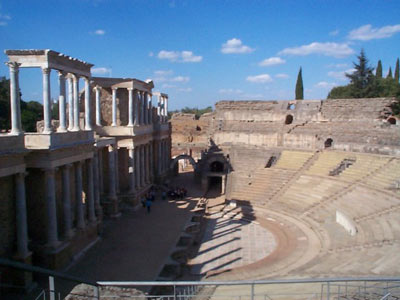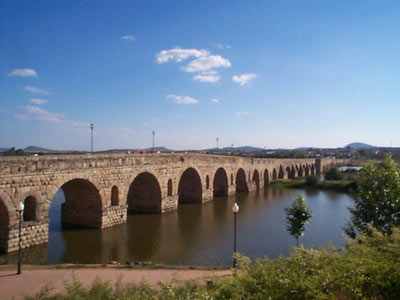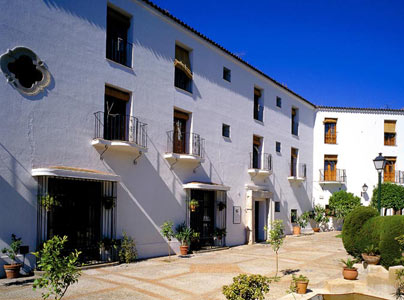 |
 |
Roman ruins at Merida |
Roman Amphitheatre at Merida |
 |
 |
Roman Bridge at Merida |
I started with a short stretch up the N432 out of Zafra, then it was country roads via Fuente del Maestro, Almendralejo, Arroyo de San Servan to get to Merida.
This is the flattest day of the trip, with just under 500 metres of ascent. And the 80 km were covered in 5 hours.
The only real problem on a bike was approaching Merida, when the road I was cycling along just ran onto the motorway (no cyclists allowed there). My map showed a small road leading to Calamonte and on to Merida, but all there appeared to be was a private water company road running allong the canal. Anyway I took that, it eventually ran out, ending in some allotments, where a gardener gave me instructions as to how to follow the track to regain the Merida road. Some time later I reached Marida, and headed for the Parador for the night. The parador is in the centre of the city, and is a good base for seeing the old Roman town.
 |
 |
Roman ruins at Merida |
Roman Amphitheatre at Merida |
 |
 |
Roman Bridge at Merida |
Merida was founded in the 25 BC, by the Roman Emperor Augustus with the name of Emerita Augusta (the name Mérida is an evolution of this) to protect a bridge over the Guadiana river. The veterens of two legions were the original settlers: V Alaudae and X Gémina. The city became the capital of Lusitania province, and one of the most important cities in the Roman empire. Mérida preserves more important ancient Roman monuments than any other city in Spain (including a triumphal arch of the age of Trajan). Mérida is a World Heritage site.
Among the remaining Roman monuments are the Puente Romano, a bridge over the Guadiana river that can still be used by pedestrians. The Alcazaba, originally built to defend the bridge, and later used by the Moors; the Temple of Diana; the remains of the Forum, including the Arch of Trajan; the remains of the Circus Maximus; the Acueducto de los Milagros (aqueduct); the Embalse de Proserpina and Cornalvo reservoirs which supplied the aquaduct and then the town with water; the Amphitheatre and the Roman Theatre where a summer festival of Classical theatre is presented.
The Parador in Merida is in a historical building and is on the remains of a temple dedicated to the Pax Augusta. The Parador conserves the former 18th C convent.

Camino de Santiago - Via de la Plata Map of my route
Day 5 Day 5 of my route